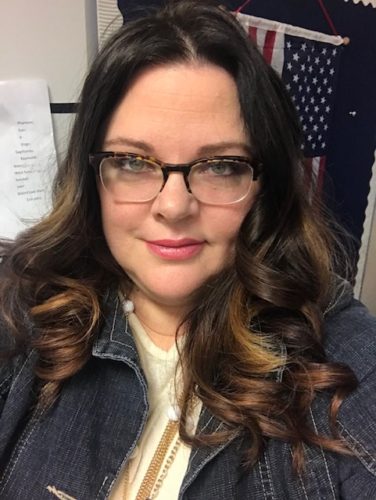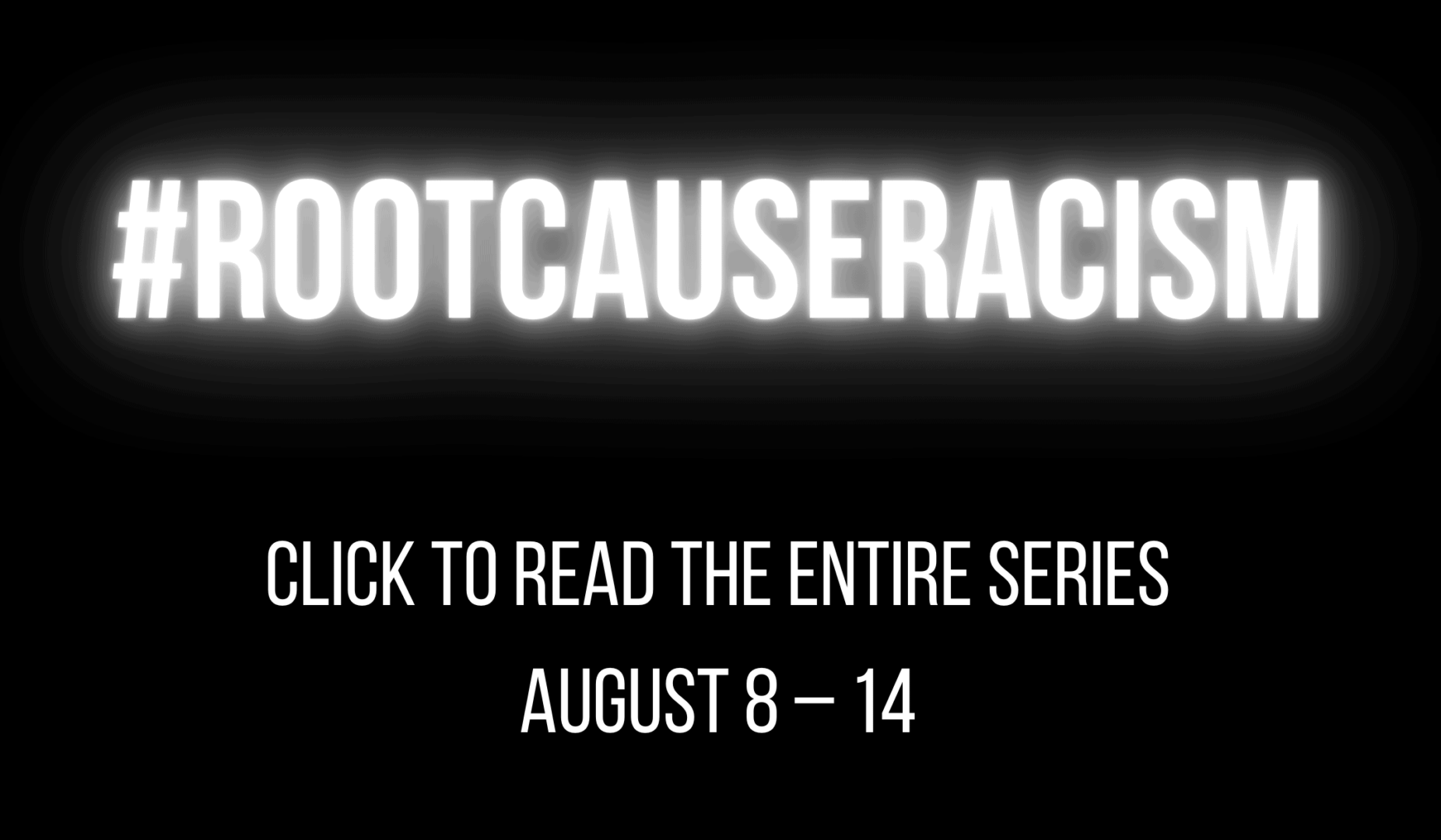“You can't teach children of color and not stand up to the injustices against them!”
YES! I thought as the words showed up in my social media feed. I immediately shared it as it spoke to me… but then I thought… what does that statement really mean? How can I back that up? What can I do as an educator to make the statement mean something?

First, let me start by saying that I am still learning. I'm not an expert on the systems of racial inequity and inequality or injustice. I'm just a third grade teacher trying to become one.
I became a teacher because there was a calling in my spirit to do it, and my father, a brilliant man, dropped out of school because he struggled with reading. His struggle included daily public humiliation by teachers and peers in a one room schoolhouse. He dropped out and joined the Navy, and off to Vietnam he went. Not having a high school diploma put him on a different path than the many he could have taken. He worked the assembly line and that was, and still is, a respectable job.
I can't help but wonder what life would have been for him if his early reading years would have been met with kindness and a teacher who would have built confidence rather than a reason not to attend school. There was a system in place for kids like him… it was called the military.
As teachers, we like routine and structure. I find that the topic of racial injustice and systems of inequity is uncomfortable for many educators. It's hard to get out of our comfort zone and think differently about the students we teach, the systems in place that may require us to change our routine and structure in order to help our children of color achieve academic success in their lifetime.
If we always stay comfortable, nothing will change. I find this to be true with anything I want to accomplish, especially diet and exercise, but that's a whole other blog. Simply put, I must get uncomfortable for things to change. I must do the work.
There are lots of new buzz words every year in the field of education. I recently attended a deeper learning symposium where the ideology is that students become engaged in project-based learning and through that learning, they go through a “productive struggle.” When students are faced with problems or challenges they don't know how to solve, they work together in a “productive struggle” to come up with creative solutions. The thinking is that best learning comes from the uncomfortable feeling of not knowing the answer to a problem or situation. The struggle to solve it must happen for connections to be made and new thinking to be established.
Feeling uncomfortable means you are about to learn some important things, or make connections that validate new thinking.
We tell our kids it's okay to feel uncomfortable when learning new things.
I'm saying to you, educators, it's okay to feel uncomfortable as you learn about systems in place that hinder our children of color, and how to talk about it. It's okay to have a “productive struggle” when it leads to new thinking and new teaching that will benefit our students of color. It's not okay to become complacent or apathetic when it comes to educating our most vulnerable populations.
So what do we do? How do we start the struggle that will bring about real change? We must do the work.
The first thing we have to do is acknowledge that there are barriers to learning for our students of color.
The second is to learn what those barriers/systems are, and how we might be contributing to them. Yes, whether we know it or not, we are contributing to them. Once we learn the systems that can harm, hinder, or do injustices to our students of color, then we can be intentional in the classroom with how we teach, how we connect, and what we teach.
If you are reading this and thinking I'm about to give you all the answers, you couldn't be more wrong. One of the things I'm learning in the book I'm currently reading is that we also shouldn't rely on BIPOC (Black, Indigenous and people of color) for these answers either. We must do the work.
My call to action is simple: Read a book. Not just any book… one that teaches about the systems of racial inequality and racism that we take part in as educators and that impact our students of color.
Knowledge is power.
When we have the knowledge of the barriers in place, the systems in place that hinder our learners, we can begin to be intentional in everything we do as educators. When we are intentional with our students of color, we support their strengths, we show them they are valued, we show them their life matters.
When, as a white teacher, I have knowledge of the systems, I can then act to make change outside of the classroom by voting locally, letting my school board know that I want an inclusive education that meets the needs of all students, by speaking up in my union, by pushing for increases in the minimum wage, by pushing my mayor and city council for police reform… the list goes on and on.
When I am aware of the systems, I can do these things for the children I teach. I must do the work.
I am currently reading So You Want to Talk About Race by Ijeoma Oluo. My school admin and leadership team are also reading it. We will be going through a lot of “productive struggles” as we work to break down these systems for our students. There is power in knowledge and power in numbers. Get like-minded people on board to read with you. I am fortunate that I have school administrators that know… we must do the work.
Lastly, my desire to make sure that all kids learn, and have an exceptional educational experience came from seeing my dad struggle. I love my job and know that I have a very important role in how many dreams my students will be able to follow and obtain. Unfortunately, there are systems in place that work to hinder the success of my students of color.
I want to know these systems like the back of my hand. I want to have eyes on these systems, even the eyes in the back of my head. I want my students of color to have ALL the choices and not just the systems that are meant to hold them back or imprison them. I want them to know their history and not for just a month in February. I want them to not only know the struggles from which they came but the intelligent, beautiful young people they are today.
I want my students to know :
“I can't teach children of color and not stand up to the injustices against them.”
Here is a good reading list to get you started: Start reading today!
Why are all the Black Kids Sitting Together in the Cafeteria? by Beverly Daniel Tatum
White Fragility: Why It's So Hard for White People to Talk about Racism by Robin DiAngelo
How to be an Anti-Racist by Ibram X. Rendi
Stamped From the Beginning: The Definitive History of Racist Ideas in America by Ibram X. Kendi
The New Jim Crow: Mass Incarceration in the Age of Color Blindness by Michelle Alexander
Locking Up Our Own: Crime and Punishment in Black America by James Forman
Promoting Racial Literacy in Schools: Differences That Make a Difference by Howard C. Stevenson
Whistling Vivaldi: How Stereotypes Affect Us and What We Can Do by Claude M. Steele
Pushout: the Criminalization of Black Girls in Schools by Monique W. Morris
What Makes White People Uncomfortable by Michael Bennett
In addition to reading a book, I also invite you to consider the following.
Pick a book and start a book club with your colleagues at school. Meet to discuss how your new knowledge transfers over to the classroom and how you will use the knowledge to be more intentional in your teaching and interactions with students.
Be conscientious of your own explicit and implicit biases. Ask your school administrators to invite this training into your building.
Be careful of being a white teacher “superhero”… saving the day with a new lunch box, school supplies, clothes… while these are well-meaning “gifts” of necessity to the students we teach, we often see this as doing our part. Until we choose to see the systems in place that inhibit our students of color, and start making changes at the systemic level, these acts only serve as a band-aid and something that makes us feel good.
Read up on the school to prison pipeline… Put children of color on your priority “radar” and understand WHY they need to be on that priority list.
Understand the power in literacy. Make sure your students of color can read and read well.
Set high goals for all of your students, but especially your children of color.


What do you think? Please scroll down (or click) to post a comment. Or please share the post with your thoughts on LinkedIn – and follow me or connect with me there.
Did you like this post? Make sure you don't miss a post or podcast — Subscribe to get notified about posts via email daily or weekly.
Check out my latest book, The Mistakes That Make Us: Cultivating a Culture of Learning and Innovation:









Jennifer,
Thank you for this well-developed and thought-provoking call to action. Your reading list provides each of us a path forward to increased understanding of systemic racism. I’m committed to learning more and doing more.
That part- “Be careful of being a white teacher “superhero”… saving the day with a new lunch box, school supplies, clothes… while these are well-meaning “gifts” of necessity to the students we teach, we often see this as doing our part.”
Good work. Good books. Great teacher!
What an excellent piece!
“If we always stay comfortable, nothing will change.” You actually could have stopped right there, but I’m glad you didn’t. I applaud you and your colleagues in looking out for and assisting ALL students, but really going the extra mile to be an ally for Black students.
I often think about how different my educational experience would have been if more of my teachers in rural Kentucky had done the same. I had a few teachers who were in my corner, but for the most part I really felt that I had to fend for myself. Not the greatest feeling for a 14-year-old kid trying to find his way. Thank you for making a difference!